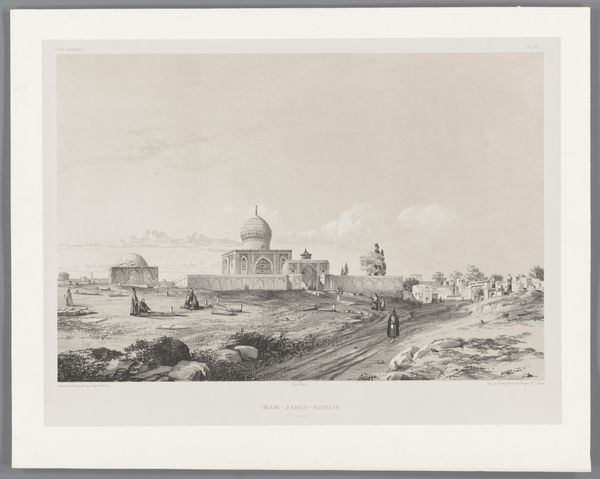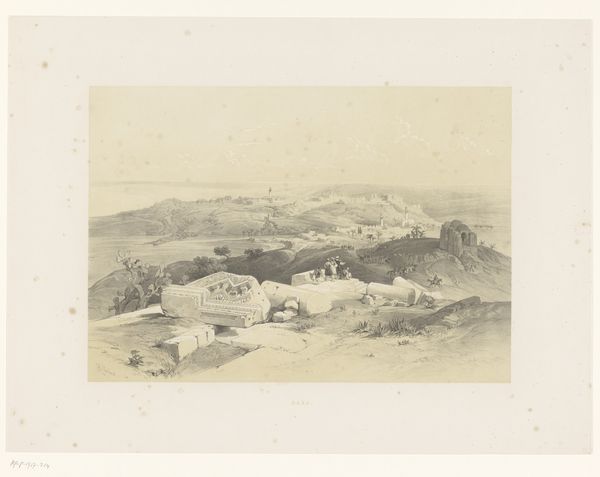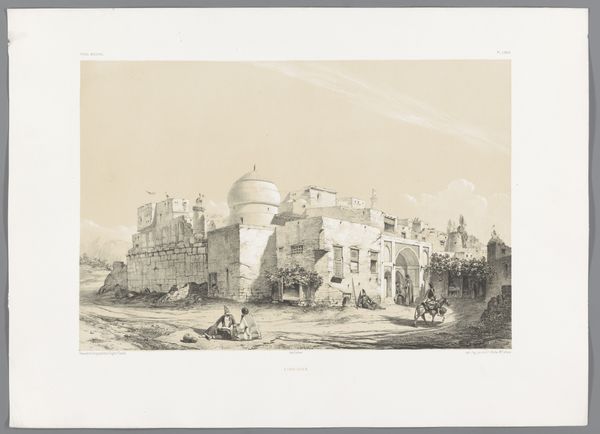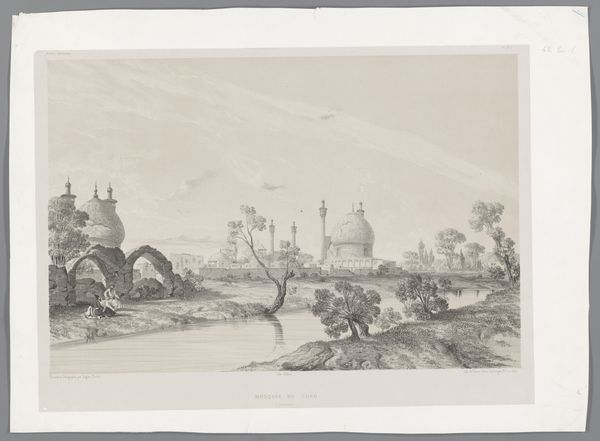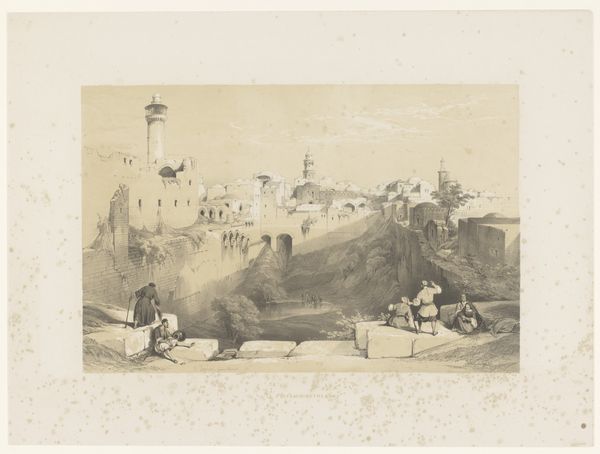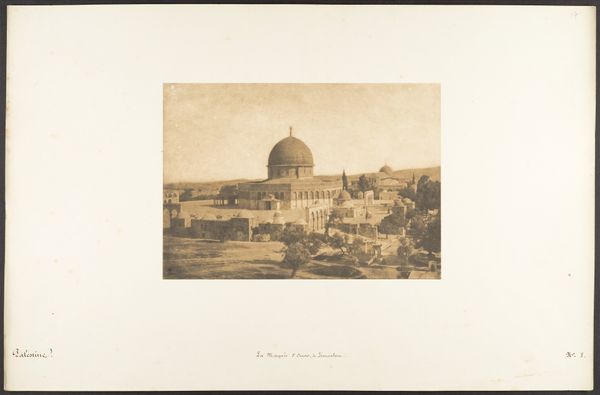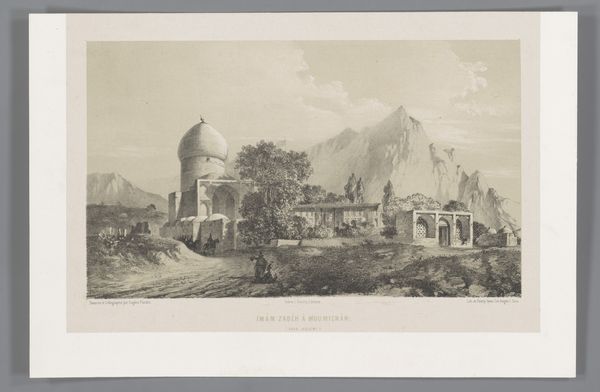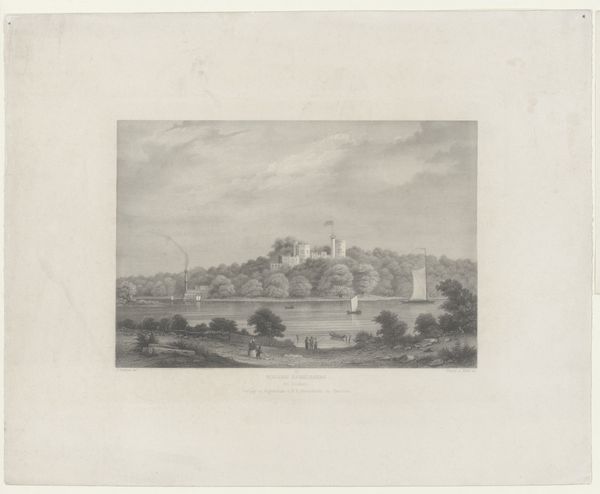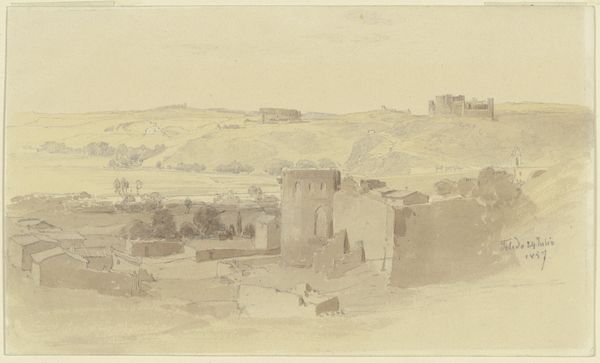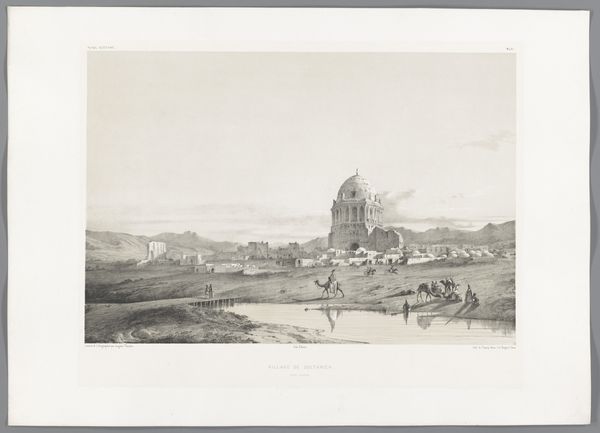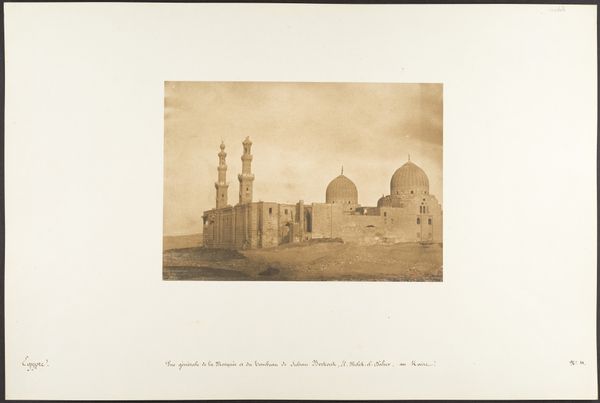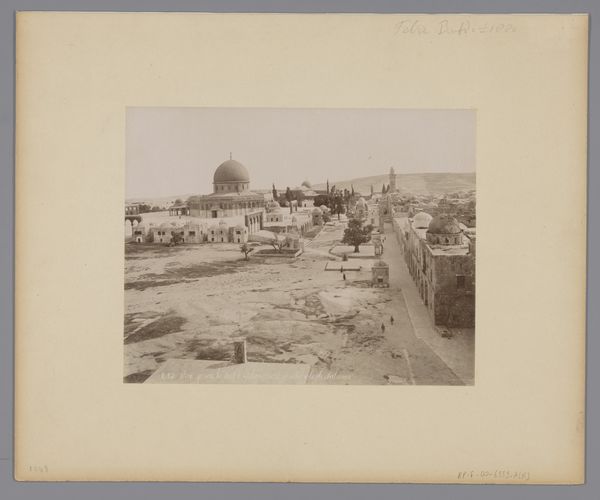
Dimensions: height 395 mm, width 531 mm
Copyright: Rijks Museum: Open Domain
Curator: This engraving is entitled "Gezicht op Jeruzalem," or "View of Jerusalem," created in 1852 by François Stroobant, now held in the Rijksmuseum collection. Editor: The muted greys give it an air of serene detachment, almost like a memory fading at the edges. The architectural forms are fascinating. Curator: Indeed. Stroobant's process reveals much about the romanticized view of the Orient during that era. The choice of engraving—a reproducible medium—democratized the image of Jerusalem. Consider the social context: it fueled both religious and colonial imaginations. Editor: I'm intrigued by the structural composition. The way he uses line and form directs your gaze upwards towards the dome, achieving a sense of spiritual ascent. Notice the sharp delineations versus the softer areas suggesting atmospheric perspective. It is almost as if he's captured the essence of the city. Curator: Exactly! And examining the material conditions—the paper, the ink, the engraving tools—tells us about the circulation of images and the development of printmaking techniques in the 19th century. How this artwork became accessible through mass production matters immensely. Editor: True, but even the specific choice of monochrome directs us towards the graphic impact—the pure form abstracted from any distracting color. One cannot deny the formal genius in presenting depth through delicate etching techniques, creating a palpable illusion of spatial recession. Curator: I appreciate your focus on technique, but it's also vital to discuss how such imagery helped shape Western perceptions, influencing politics and trade. We need to consider how this 'view' served larger economic and power structures. Editor: I concede the importance of context. Still, without decoding its aesthetic language, we risk flattening its symbolic value to mere propaganda. By attending to line, light, and form, one finds an eternal yearning depicted here. Curator: Perhaps it is both. Studying its method helps unearth the power relations it enacts; close looking helps uncover the ideals of beauty. Editor: A productive synthesis, then. Understanding form helps one confront the political questions that necessarily flow from any careful material examination.
Comments
No comments
Be the first to comment and join the conversation on the ultimate creative platform.
